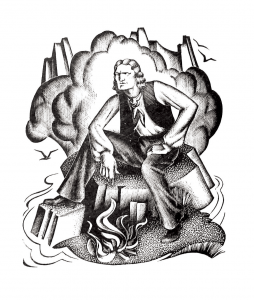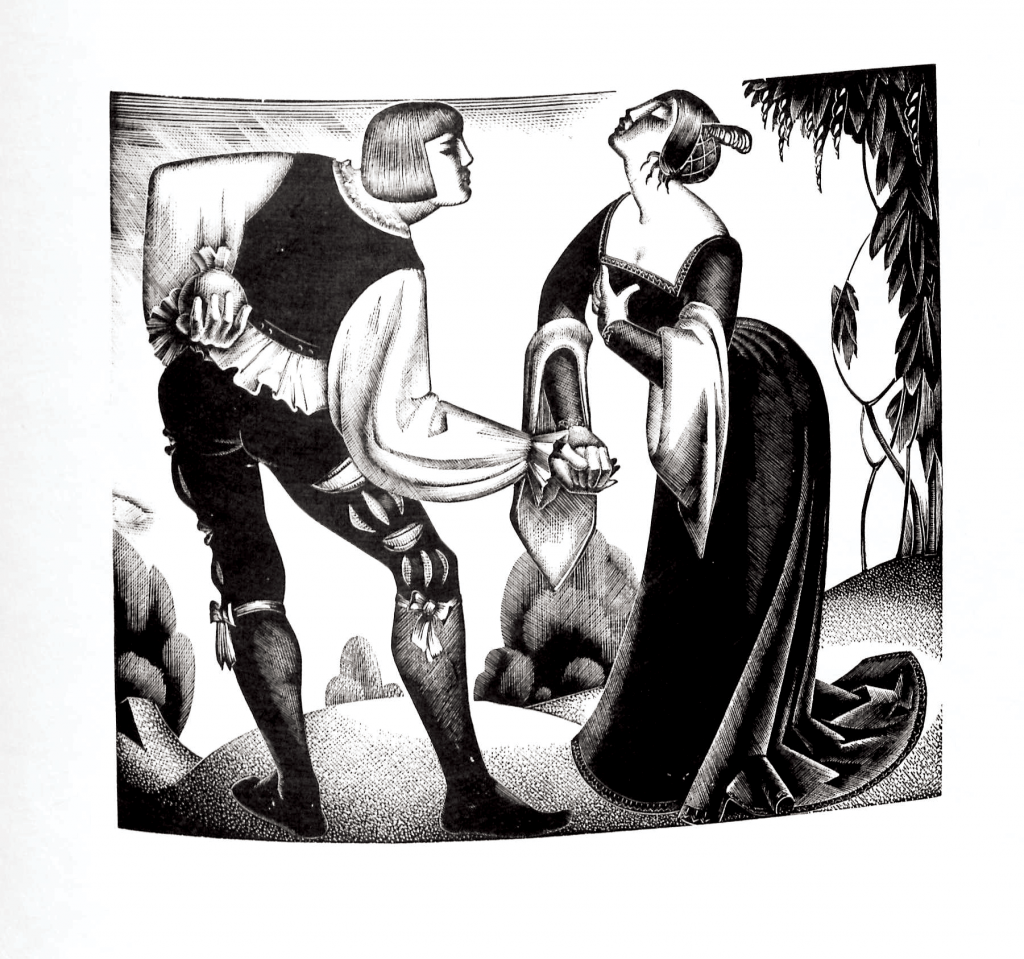To successful evaluate this project I think I must look back on my own proposal that I wrote for it:
“For my personal project I am eager to explore a long-time interest of mine, Folktales. I would like to research the structure of a folktale, how this can change and evolve from story teller to teller and how this resonates in modern culture. Folktales combine the mundane with magic and intrigue, they tell stories of local people, myths, traditions and the landscape to name but a few themes. I find that their rich history and range of topics serve as fuel for visual stimuli. For my outcomes I would like to create a body of work which explores experimental book illustration and bookmaking, utilising different bookmaking techniques to visually represent the concept of oral storytelling. With the extensive deadline I feel that it presents the opportunity to create some developed lino or lithography prints as part of the book illustration. I would like to challenge myself with overprinting the pre-designed book to add an element of chance much like the telling of a folktale is different each time it is told. To broaden my scope in this project, I would like to include the opportunity of using animations as part of the book with technology such as Aurasma. Overall, I want the project to be an experiment in modern storytelling in creating a book which gives the same excitement and spontaneity as the oral telling of a folktale.”
I have loved this personal project, it has satisfied a creative urge in me that I’ve had for a while. I’ve always wanted to create a children’s book but things just kept getting in the way, for this project how it was the perfect opportunity. I think this project has worked so well because I was focused on my research. I asked family and friends for their opinions on folk tales, testing their memory when I told them folktales. Also, I did a lot of research in the library looking at different stories and the special collection. I looked at scholarly research into modern folklorist (can be seen in back of sketchbook), these kept me up to date with the study of folklore and how it can be mistold. It took me a while to settle on just using Sussex folktales, but I’m glad I did. Through researching Suffolk folktales against Sussex folktales I realised that each place has a different set of symbols in their folktales, this interested me. Also, through reading folktales I realised that they have a strange format structurally they twist and turn and go back on themselves and back round again. Add to this the Chinese Whispers they often go through there are so many variations on folktales. This interests me, how the same story can undergo so many changes and become five different stories.
Through my research I saw how the internet is a new format for folktales through the form of forums, people tell a story and people add and change things to it. I tried my own experiment of this and drew a picture and asked people to respond to it, unfortunately I only got one reply but it made my day that anybody replied. I realised that this was an unreliable way to get my project going.
So, instead I dived head first into drawing and getting my ideas down on paper. I had multiple group tutorials where I would ask for opinions on my developing final piece. I knew that I wanted it to be creative book binding but I wasn’t sure how. With help from my peers and Helen (in bookbinding) I made some prototypes of the final outcome. I wanted them to appear authentic and aged so used Gum Arabic transfers over drawings of Cuckmere Haven that I made during a week drawing project. I loved how these looked and decided to bind them as a concertina. Jeremy inspired me to stick to the concertina book idea and develop it.
To add in some extra textures and visual warmth I crocheted a sample and used that in monoprint. The results are everything I wanted and set the tone for a slower pace of life that is incorporated in folktales. Combining these textures and a make your own story format I played with page design. I also wanted to have an extra feature of stickers which worked well to give the reader full control over the content of the book. The stickers are designed around common symbols in Sussex folktales to put my research directly back into the outcome.
The final book is Gum Arabic transferrred also and I’m so pleased with the outcome. I decided to submit the final book and the ‘Make Your Own’ book kit, to show the possibility. Below is a video of myself making the book.
I think this project has been so important to me because I feel emotionally connected to these stories, you can get lost in them and book making and I hope to pass on this experience in the user of the book. The kit is formed of the pages, thread, stickers, a how to use pamphlet and a case for it all. Its a fully formed outcome which has purpose and function. I’m proud of how my developed work for this project has grown and I think my passion is clear to see.












































 (Above are images from the monoprinting session_
(Above are images from the monoprinting session_
